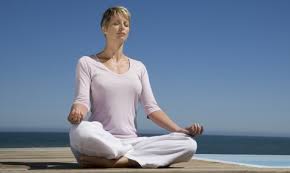Meditation is used for many purposes by all types of people all over the world. Meditation is a useful and practical relaxation technique. To use it, sit in a comfortable place, close your eyes, relax your body, and focus your concentration on something for a period of time.
Meditation is to consciously relax your body and focus your thoughts on one thing for a sustained period. This occupies your mind, diverting it from the problems that are causing you stress. It gives your body time to relax and recuperate, and to clear away stress hormones that may have built up.
Some people use meditation before a tense situation, like a sports event or an exam. The people who do practice how to relax and meditate realize its benefits. However, those who don’t use these techniques don’t realize that you don’t need an hour or two at a time each day in order to practice meditation.
There are many benefits to using mediation and relaxation techniques also. Many sports players use mediation and relaxation to be able to give them a good visualization of winning their competition.
Some people may be confused by what meditation really is. Some might assume that one needs to sit in a cross-legged position with their hands on their knees, all while repeating a phrase over and over again. However, learning how to relax and meditate is not that difficult. First, as stated before, all you need is five or ten good minutes a day.
In addition to breathing and relaxing your muscles and your entire body, you may want to use good and happy thought techniques or even reflect on something enjoyable. For example, you may think about being on the beach or even skiing down a mountainside. It is possible to achieve a state of relaxation and mediation in just five or ten minutes and these are all the tools that one needs to be able to learn how to relax and meditate successfully!
By some deep relaxation is a great antidote Technique are-
1. Find a comfortable place to lie down.
Take off your shoes, loosen your belt and other tight clothing, and stretch out on your back with your arms resting at your sides, legs slightly apart.
2. Sense your body as a whole, including the places where it contacts the surface of the bed or floor.
3. Close your eyes and bring your awareness to your feet.
Wiggle your toes, flex your feet, and then let go of all tension as much as you can, allowing your feet to melt into the floor.
4. Shift your awareness to your lower legs, thighs, and hips.Imagine them becoming heavy and relaxed and melting into the floor. If the image of melting doesn’t appeal to you, you might try dissolving or sinking or disappearing.
5. Bring your awareness to your lower abdomen.Imagine all tension draining away, your breath deepening, and your belly opening and softening.
6. Bring your awareness to your upper abdomen, chest, neck, and throat, feeling the areas opening and softening.
7. Bring your awareness to your shoulders, upper arms, lower arms, and hands.
Imagine them becoming heavy and relaxed and melting into the floor.
8. Bring your awareness to your head and face.Feel the tension melting away from your face across your head and into the floor.
9. Scan your body from head to toe, searching for any remaining areas of tension or discomfort.
If you find any, just imagine them relaxing completely.
















